Search results for: Marketing Communication Mix
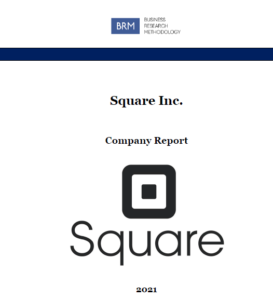
Square Inc. is a global financial services and digital payments company based in San Francisco, USA. Founded by co-founder of Twitter, Jack Dorsey and Jim McKelvey in 2009, the company started with selling card readers that enabled small businesses to accept credit cards. Since that time Square has evolved into an international financial services and mobile payments platform providing an ecosystem of integrated products and services. In 2019 Square processed USD106.2 billion of Gross Payment Volume (GPV), which was generated by nearly 2.3 billion card payments from 407 million payment cards. At the end of 2019, Square point of sale ecosystem had over 180 million buyer profiles and approximately 230 million items were listed on Square by sellers. The financial unicorn generated net income of USD375.4 million in 2019, employing 3,875 people full-time. Square business strategy is based on simplification of financial transactions and the company has developed an expanding ecosystem of products and services. The finance sector disruptor has certain business advantages such as the first mover advantage and strong leadership by CEO Jack Dorsey. At the same time, there are certain weaknesses associated with Square. These include lack of global presence, high employee turnover and dependence on payment cards networks. The payments company faces a set of potential threats as well such as increasing complexity of the business, cyberattacks and emergence of new competitors. Leadership style at Square can be classified as purpose-driven leadership and the payments company has a purpose to make it easier for everyone to participate in the economy. Furthermore, Square leadership appreciates teamwork and focuses on benefiting from team effort to a great extent. Square Inc. Report contains the application of the major analytical strategic frameworks in business studies such as SWOT, PESTEL, Porter’s Five Forces, Value Chain analysis, Ansoff Matrix and McKinsey 7S…
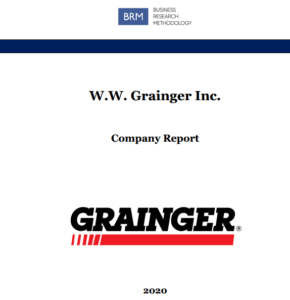
Founded in Illinois, US in 1928, W.W. Grainger Inc. is a B2B distributor of maintenance, repair and operating (MRO) products and services. The global industrial supply company has more than 3,5 million customers and about 25000 employees worldwide. (Fact Book, 2020). The global MRO products distributor works with approximately 5000 suppliers internationally. In 2019 Grainger generated revenues of USD 11,2 billion, 3% increase compared to the previous year (Annual Report, 2019). Grainger pursues differentiation business strategy. Specifically, the B2B distributor differentiates on the basis of products, offering the widest range of MRO product categories. Grainger’s use of differentiation business strategy also extends to differentiated sales and services. The company delivers its products with high level of speed and convenience and employs highly qualified sales representatives with deep technical knowledge. Grainger has hierarchical organizational structure and its organizational culture is based on diversity and inclusiveness and value for technology and innovation. Moreover, focus on teamwork can be highlighted as one of integral components of Grainger organizational culture. Business development strategy for the B2B distributor integrates market penetration, product development and market development strategies. The industrial products distributor immensely benefits from the economies of scale and the company has an extensive experience and knowledge in selling MRO products. At the same time, Grainger has certain weaknesses that can have negative implications on long-term growth prospects of the business. High level of indebtness is a major issue for the company and as of December 2019, Grainger’s consolidated debts amounted to USD 2,4 billion. Moreover, with total 72% of revenues generated in the US in 2019 (Fact Book 2020), the B2B distributor is over-dependent on the home market in the US. W.W. Grainger Inc. Report contains the application of the major analytical strategic frameworks in business studies such as SWOT, PESTEL, Porter’s Five Forces,…
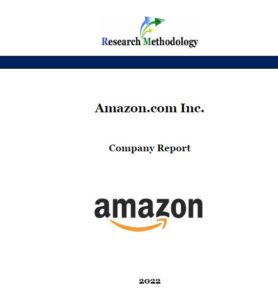
Amazon.com Inc. was founded in 1994 in Washington and Amazon.com as a website became first active in July 1995 to become the largest online retailer in the world to offer Earth’s Biggest Selection in less than two decades. The e-commerce and cloud computing company generated revenues of USD 386 billion and earned a net income of USD 21.3 billion in 2020 alone (Annual Report, 2020) The e-commerce giant employs approximately 1,3 million full-time and part-time employees referred to as Amazonians (Annual Report, 2020). Amazon has declared its adherence to four principles: customer obsession rather than competitor focus, passion for invention, commitment to operational excellence and long-term thinking. These principles represent sources of Amazon’s competitive advantage. Amazon business strategy is a hybrid of cost leadership and business diversification. The online retailer also benefits from encouraging communication between various elements within its ecosystem and promotion of its leadership principles consisting of 16 points discussed in this report. The founder and former CEO Jeff Bezos prefers to base business strategy on things that do not change. Specifically, consumers will always want low prices, variety and speedy delivery of their orders. Amazon focuses on these facts via effective integration of information technology into various business processes. Combination of pragmatist, visionary and autocratic leadership styles are exercised at various levels at Amazon. The company has a hierarchical organizational structure. Nevertheless, it remains highly flexible to adapt to frequent changes in the external marketplace. Amazon organizational culture, on the other hand, is based on the principles of high level of cost-consciousness, constant reinvention and improvement of organizational culture and customer obsession. Major weaknesses associated with Amazon include seasonality of the business, low profit margins and lack of focus on specific product or service categories. Moreover, a weak competitive position of Amazon’s Fire Phone and damage to…

Search About us Number of ebooks 300+ Started in 2011 by John Dudovskiy, research-methodology.net is an educational portal that offers knowledge, resources and practical insights for conducting business studies. John Dudovskiy is a seasoned dissertation adviser and he has experience in assisting hundreds of students with their dissertations, reports and essays in business discipline. All materials published at research-methodology.net are designed to support and inspire professionals and students at all levels to conduct studies in the area of business. read more Business Analytical Tools SWOT is a strategic analytical tool for assessing strengths and weaknesses of a business, analyzing available opportunities and threats faced by the business. SWOT analysis can be used at organizational and personal levels. Ansoff Matrix is a marketing planning model that helps the e-commerce and cloud computing company to determine its product and market strategy. Ansoff Matrix illustrates four different strategy options available for businesses. These are market penetration, product development, market development and diversification. PESTEL is a strategic analytical tool used to assess external factors affecting businesses. PESTEL acronym stands for political, economic, social, technological, environmental and legal factors impacting companies. PESTEL has recently evolved from PEST analysis once intensifying forces of globalization and intensifying forces of competition in the marketplace coupled with other set of factors increased the importance and potential impact of environmental and legal factors on businesses. The concept of marketing mix (also known as 7Ps of marketing) comprises elements of the marketing mix that consists of product, place, price, promotion, process, people and physical evidence. Companies manipulate with each element of the marketing mix according to its marketing strategy, as a part of its business strategy. Segmentation, targeting and positioning involves a set of consequent marketing decisions that constitute the core of company’s marketing strategy. Segmentation refers to dividing population into…
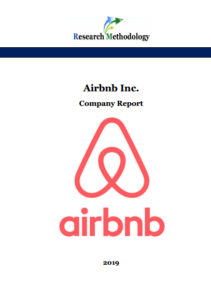
Airbnb Inc. is a global hospitality service brokerage company. It is an online marketplace for peer-to-peer lodging, as well as, tourism and experiences services. Founded in 2008 in San Francisco, USA, Airbnb has become a lodging colossus and travel industry disruptor with more than 6 million listings in more than 191 countries and regions worldwide. There are about 100000 cities with Airbnb listings and 500 million Airbnb guest arrivals all-time. Moreover, more than 2 million people on average stay on Airbnb each night and there are more than 30000 Airbnb experiences worldwide. The company employs about 5000 employees worldwide. Airbnb’s business has doubled almost every year of its existence. It became profitable in 2017, with a profit of USD93 million on revenue of USD2.6 billion. This is a stark contrast from heavily loss-making sharing companies such as Uber and Lyft. It is estimated that in 2018 Airbnb surpassed the performance of the previous year and by 2020, its revenue is projected to be as much as USD8.5 billion. The peer-to-peer lodging company is valued at about USD 31 billion. The company’s mission is to create a world where anyone can belong anywhere, providing healthy travel that is local, authentic, diverse, inclusive and sustainable. Airbnb business strategy effectively contributes to this mission. Airbnb business strategy is associated with platform business model and accordingly, instead of owning the services it offers, the company engages as a broker between suppliers and consumers, receiving a commission of 9% to 15%. Moreover, increasing level of technological integration into various aspects of the business can be specified as one of the critical features of Airbnb business strategy. The global hospitality service brokerage company also places its community and trust among organizational stakeholders at the forefront of its business strategy. The travel industry disruptor has certain weaknesses…
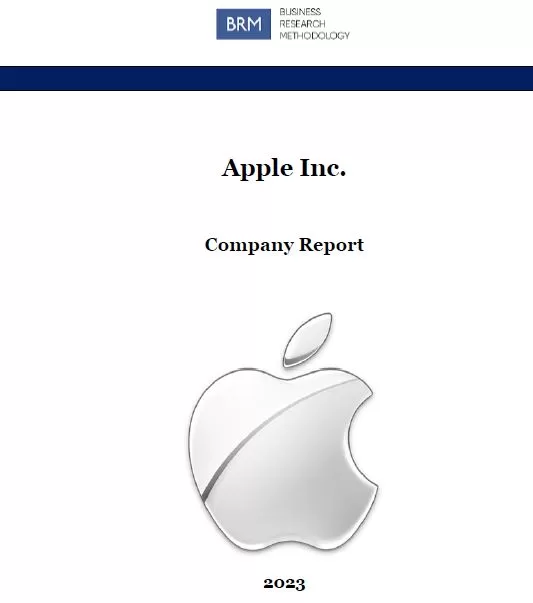
Established in 1977 in California, Apple Inc. is a global designer, manufacturer and marketer of mobile communication and media devices, personal computers, and portable digital music players. Apple is the largest IT company in the world by revenue and total assets and the second-largest mobile phone manufacturer. The company also sells a variety of related software, services, accessories, networking solutions, and third-party digital content and applications. Apple’s ability to design and develop its own operating systems, hardware, application software and services to provide its customers products and solutions with innovative design is placed at the core of its business strategy. As of September 2022, Apple had approximately 164,000 full-time equivalent employees . The net sales of the world’s largest IT company by revenue increased 8% or USD 28,5 billion during 2022 compared to 2021. Higher net sales in Services and Wearables, Home and Accessories categories played an instrumental role in achieving such a growth. Apple business strategy comprises focusing on design and capabilities of products and ever-strengthening the company’s ecosystem. The first company ever to be valued at USD1 trillion purposefully cultivates a reputation for not paying dividends to investors. In short-to-medium term perspective, Apple is working towards decreasing dependence of the business on the sales of iPhones. Leadership style at Apple is known to be democratic. CEO Tim Cook practices ‘quiet leadership’ and he is widely recognized as an effective leader. At the same time, a number of industry watchers and analysts criticize Tim Cook for the lack of innovative genius his predecessor legendary Steve Jobs used to possess. Apple has hierarchical organizational structure. Moreover, the company’s organizational structure also integrates product-based grouping with a focus on collaboration between different groups and divisions. Organizational culture of the multinational technology company, on the other hand, fosters creativity and innovativeness coupled…
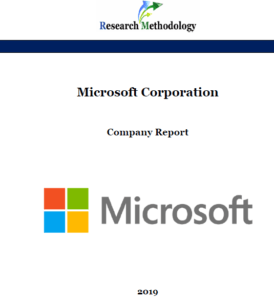
Microsoft Corporation is a US-based global technology company with headquarters in Richmond, Washington. Founded in 1975, Microsoft’s mission is ‘to empower every person and every organization on the planet to achieve more’. Microsoft employs more than 130 000 people internationally. During the fiscal year 2018 the tech giant generated USD 110.4 billion in revenue and USD 35.1 billion in operating income. Microsoft produces a wide range of products and services related to productivity and business processes and to support digital work and life of customers. Some of its products and services have become highly popular in the global scale. For example, more than 135 million people use Office 365 commercial every month and Outlook Mobile is installed into more than 100 million iOS and Android devices worldwide. Similarly, Microsoft Teams is used by more than 300 organizations worldwide, including 87 of the Fortune 100 and nowadays there are nearly 700 million devices around the world with active Windows 10. In 2014, Satya Nadella replaced Steve Ballmer as CEO of Microsoft. Since taking over the top job, Nadella has focused on ‘humanising’ the company by improving its organizational culture and he also enhanced the coordination of efforts across the departments and groups of the company. Microsoft business strategy can be classified as product differentiation. The company develops advanced technological products and services and sells them for premium costs. Moreover, Microsoft business strategy is currently focused on “cloud-first, mobile-first”, growth through mergers and acquisitions and exploring business opportunities related to augmented and virtual reality. Recently, the multinational technology company has also included ‘tech intensity’ as one of the important pillars of its business strategy Microsoft Corporation Report contains the application of the major analytical strategic frameworks in business studies such as SWOT, PESTEL, Porter’s Five Forces, Value Chain analysis, Ansoff Matrix and…
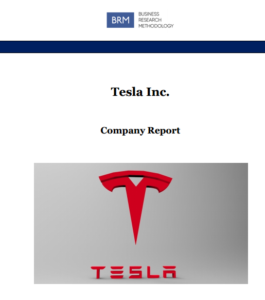
Tesla Inc. (formerly Tesla Motors Inc.) is an alternative fuel vehicles manufacturer founded in 2003 by Martin Eberhard and Marc Tarpenning in Palo Alto, California, USA. The company produces fully electric vehicles, energy generation and storage systems and also installs and maintains such systems and sells solar electricity. Tesla’s mission statement is ‘to accelerate the world’s transition to sustainable energy’. The electric automaker operates stores and galleries in the US and 35 other countries worldwide and employs more than 70,500 people globally. In 2020, Tesla achieved operating margin of 6,3% which is the highest in the industry. The electric automaker had an operating cash flow less capex (free cash flow) of USD 2.8 billion during the same period. In the last quarter of 2020 alone, Tesla had USD 4.9 billion increase in cash and cash equivalents. Free cash flow during the same period reached USD 1.9 billion. Tesla business strategy integrates focus on electric cars and ownership of distribution of products. Moreover, the company stresses the low cost of ownership of Tesla electric vehicles as one of the solid bases of its competitive advantage. The alternative fuel vehicles manufacturer has a divisional organizational structure and its divisions include energy, engineering and production, HR and communications, legal and finance, sales and software. Tesla organizational culture, on the other hand, is associated with ambitious innovation, adherence of First Principles method of decision making and lack of bureaucracy throughout the company. Tesla possesses a set of competitive strengths. These include the first mover advantage, increasing numbers of vehicles sales, expertise in innovation and a high level of brand recognition at an international level. At the same time, there are certain issues that cast a doubt over long-term growth prospects of the electric automaker. These points of concern for Tesla include overly expensive price…
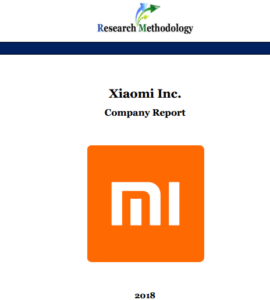
Xiaomi Inc. is a privately owned electronics and software company founded in 2010 by serial entrepreneur Lei Jun, along with seven other co-founders. The mobile internet company has established its presence in 70 countries and regions and it is among the top 5 in 16 markets. Xiaomi currently employs about 18,000 people. In 2017 Xiaomi generated more than RMB 100 billion revenues and expected to get listed in the Fortune Global 500 list in foreseeable future. Xiaomi business strategy is based on cost advantage. Moreover, the company gathers and utilizes its large fan base in an efficient manner with positive implications on customer loyalty and the bottom line for the business. An aggressive expansion of ecosystem of products and services is also placed at the core of Xiaomi business strategy. The mobile internet company has matrix and flat organizational structure. According to framework of Ansoff Growth Matrix, Xiaomi uses all for strategies – market penetration, product development, market development and diversification, in an integrated manner. Efficient leadership by founder and CEO Lei Jun, impressive rate of growth and cost advantages compared to competition are considered as major strengths associated with Xiaomi. At the same time, the company has noteworthy weaknesses such as low profit margin, lower smartphone capabilities and functionalities compared to major competitors and difficulties of sustaining competitive advantage. Xiaomi Inc. Report contains the application of the major analytical strategic frameworks in business studies such as SWOT, PESTEL, Porter’s Five Forces, Value Chain analysis and McKinsey 7S Model on Xiaomi. Moreover, the report contains analyses of Xiaomi business strategy, leadership and organizational structure and its marketing strategy. The report also discusses the issues of corporate social responsibility. 1. Executive Summary 2. Business Strategy 3. Leadership 4. Organisational Structure 5. Organizational Culture 6. Xiaomi and Ansoff Matrix 7. SWOT Analysis…
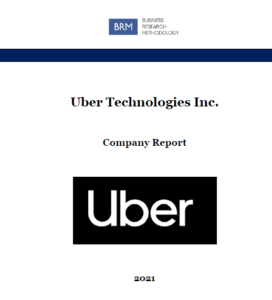
Uber Technologies Inc. is a global transportation technology company that operates in more than 10,000 cities in approximately 71 countries. The ride-hailing giant and its subsidiaries employ approximately 22,800 people globally (Annual Report, 2020). The global transportation technology company generated revenues of USD 11,1 billion in 2020, a decline of 14% compared to the previous year. Uber incurred operating losses of USD 3.0 billion, USD 8.6 billion and USD 4.9 billion in 2018, 2019 and 2020 respectively. The largest taxi company in the world has no cars of its own. Drivers are independent contractors for the company and they use their own or rented cars to drive with Uber using Uber app. The company has effectively disrupted the taxi industry in the global scale. Uber business strategy involves increasing service range to cater for the needs of great amount of customers and focusing on high levels of user convenience. Moreover, cost-saving through technological innovation is placed at the core of Uber business strategy. The company follows growth path through acquisitions, purchasing start-ups that can contribute to its ecosystem. The ride-hailing giant had a leadership crisis in 2017. Lack of leadership skills of co-founder and the first CEO Travis Kalanick had caused the formation of a poor corporate culture. As a result the company suffered from a range of serious scandals involving discrimination, sexual harassment and even mobbing. Uber CEO was even caught on video rudely arguing with driver about declining fares (Wong, 2017). Mr. Kalanick had to step down from leadership role as demanded by investors and Expedia’ CEO Dara Khosrowshahi became a new CEO for Uber. Uber possesses considerable strengths such as the first mover advantage, global market leadership and the brand value and advanced level of user convenience. At the same time, the company has serious weaknesses such…
